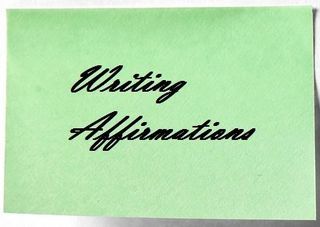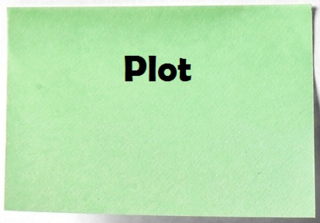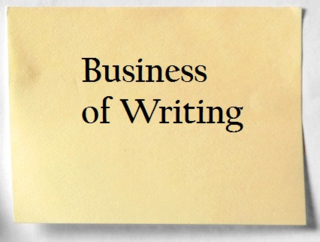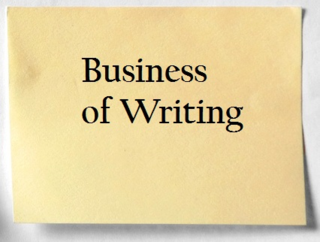Rob Bignell's Blog, page 256
July 2, 2016
Writing Affirmation: Pay Attention to Details
Sometimes  when writers get stuck or can���t seem to figure out how to improve their writing, the issue is the lack of details about a character or setting.
when writers get stuck or can���t seem to figure out how to improve their writing, the issue is the lack of details about a character or setting.
Good fiction and essay writing in part is giving just the right concrete details, the minutiae that perfectly captures the moment or idea. It is the beading of sweat on a nervous man's forehead, the bourbon���s acrid taste as the spy realizes his drink has been poisoned, the electric tingle a woman feels when her lover's lips gently caress her neck; the groan of metal as a submarine sinks to an ocean���s bottom, the waft of perfumed blooming night flowers on a romantic evening.
As walking through your day, pay attention to the details around you. Bring a writing pad with you and note them, especially those that will fit in your story. As you read, watch for those details to see how other authors utilize them; note them as well or see if they inspire your own creativity and write that down in your writing pad as well.
Here are some great tips about this:
��� Use concrete details to make writing more vivid
��� Use physical gestures to show rather than tell
��� 'Show, don���t tell' when writing fiction
��� Appeal to sense of sound when writing
��� Ensure descriptive writing serves a purpose
Professional Book Editor: Having your novel, short story or nonfiction manuscript proofread or edited before submitting it can prove invaluable. In an economic climate where you face heavy competition, your writing needs a second eye to give you the edge. I can provide that second eye.
<A HREF="http://ws-na.amazon-adsystem.com/widg... Widgets</A>
Related articles
 Common questions about publishing ebooks
Common questions about publishing ebooks Promote your book by hosting guest bloggers
Promote your book by hosting guest bloggers Make tables readable in your self-published book
Make tables readable in your self-published book What are examples of 'concrete details'?
What are examples of 'concrete details'?
July 1, 2016
Seven ways to promote your book on Goodreads
As Goodreads  is made for readers to exchange thoughts on books, it���s the perfect social media platform to promote your book. Indeed, with more than 20 million users, many go to Goodreads to decide what will be the next book they read. Why not come up with ways to convince those readers that your book is the one they should choose?
is made for readers to exchange thoughts on books, it���s the perfect social media platform to promote your book. Indeed, with more than 20 million users, many go to Goodreads to decide what will be the next book they read. Why not come up with ways to convince those readers that your book is the one they should choose?
Of course, Goodreads won���t allow you to make outright pitches and pseudo-advertisements for your book, as that diminishes the discussion aspect of the site. That doesn���t mean you can���t leverage Goodreads to pitch your book, however; you just have to be more clever about it.
First, recognize that not all 20 million-plus of those readers will be interested in your book. So you have to identify those readers interested in books similar to yours (TIP #1). If you write westerns, for example, there���s no point in connecting with readers of romance. Start by ranking those similar books that you���ve read and sending them a friend request.
Next, make sure all of your books are listed at Goodreads (TIP #2). You might be surprised to find that they already are! You may need to add a cover. In addition, get some reviews posted for your books, just as you would for your Amazon.com site.
Make sure you have a Goodreads Author page with all of your books listed there as well as a feed from your blog (TIP #3). When you send a friend request or when someone stumbles across your book and finds it interesting, they���ll likely click your name ��� which sends them to your author page ��� to find out more. Your page then is an opportunity to convince them to buy your book!
The Listopia section also is a good place to add your books (TIP #4). Find the appropriate categories and add away. Be sure to add books by other authors to the lists as well.
When you do publish your book, immediately add it to Goodreads. You can rate your own book a rating and follow it up with a note sent to each of your friends about its release (TIP #5). In addition, consider have a promotion in which you give away a couple of copies of the book (TIP #6). This helps bring people learn about your book and brings Goodreads users to your page where they can be introduced to you and your other titles. You also can lead a Q&A discussion group about your book (TIP #7). This is particularly useful when you have a large number of friends and fans.
Professional Book Editor: Having your novel, short story or nonfiction manuscript proofread or edited before submitting it can prove invaluable. In an economic climate where you face heavy competition, your writing needs a second eye to give you the edge. I can provide that second eye.
<A HREF="http://ws-na.amazon-adsystem.com/widg... Widgets</A>
Related articles
 Common questions about publishing ebooks
Common questions about publishing ebooks Do Kindle DP pre-orders help or hinder sales?
Do Kindle DP pre-orders help or hinder sales? Hold contest to get more reviews of your book
Hold contest to get more reviews of your book What is a 'platform' when promoting a book?
What is a 'platform' when promoting a book?
June 30, 2016
Nonfiction books consists of several parts
When  writing the manuscript of a nonfiction book, you���ll want to think about more than just the main content that forms its chapters. While the main content is what readers primarily look at, there are several other parts.
writing the manuscript of a nonfiction book, you���ll want to think about more than just the main content that forms its chapters. While the main content is what readers primarily look at, there are several other parts.
Generally, the parts of a nonfiction book can be divided into three groups.
The first is the front matter. This is the material that comes before the main content. It includes:
��� Title page
��� Half-title page (aka copyright page)
��� Acknowledgments
��� Dedication
��� Foreword
��� Preface
��� Introduction
Of these pages, only the title page and the half-title page really are necessary. In addition, sometimes the acknowledgments are wrapped into the introduction.
Following the front matter comes the bulk of the book, known as the main content. It consists of:
��� Parts (i.e. Part I, Part II, Part III)
��� Chapters
��� Subsections of chapters
The main content can be organized in a number of ways, though the most common structure is by chapter with subsections. Extremely long nonfiction books might have chapters grouped into parts.
The last section, after the main content, is the back matter. Its components are:
��� Bibliography
��� Appendix/Appendices
��� Glossary
��� Index
��� Author���s bio
None of these back matter elements need be included. Sometimes the author���s bio is placed on the back cover or the book packet.
Professional Book Editor: Having your novel, short story or nonfiction manuscript proofread or edited before submitting it can prove invaluable. In an economic climate where you face heavy competition, your writing needs a second eye to give you the edge. I can provide that second eye.
Amazon.com Widgets
June 29, 2016
Who's ownin' who? Who���s vs. whose
Sometimes  possession doesn���t require an apostrophe. Such is the case with these two often confused words.
possession doesn���t require an apostrophe. Such is the case with these two often confused words.
Who���s is a contraction for who is, and less commonly who has. For example, Who���s bringing potato chips to the party?
Whose is the possessive form of who, showing that something belongs to who. To wit, Whose house is the party at? (You wouldn���t write Who is house is the party at?...)
While an apostrophe typically is used to show possession, of course it also can be used to show a contraction. The latter is the case with who���s. And while rare, sometimes possession is shown by changing the form of the word, as in whose.
Professional Book Editor: Having your novel, short story or nonfiction manuscript proofread or edited before submitting it can prove invaluable. In an economic climate where you face heavy competition, your writing needs a second eye to give you the edge. I can provide that second eye.
<A HREF="http://ws-na.amazon-adsystem.com/widg... Widgets</A>
Related articles
 Writing Inspiration: Who are you?
Writing Inspiration: Who are you? Writing Inspiration: Seek another's advice
Writing Inspiration: Seek another's advice Five Great Quotations about the Writing Process
Five Great Quotations about the Writing Process Make tables readable in your self-published book
Make tables readable in your self-published book Four ways to write a great tweet that sells books
Four ways to write a great tweet that sells books
June 28, 2016
Four writing prompts: Promise
Good stories  center on the clashing of characters��� goals and motivations. Sometimes a character���s goals and motivations arise from dulfilling a pledge to another. Here are four writing prompts for stories that center on promise.
center on the clashing of characters��� goals and motivations. Sometimes a character���s goals and motivations arise from dulfilling a pledge to another. Here are four writing prompts for stories that center on promise.
Man vs. nature
A man makes a promise to his best frend (such as a soldier delivering a dying buddy���s letter to a wife), but to keep it he must survive a difficult journey. What natural obstacles does he encounter along the way? In overcoming these obstacles, what does he learn that allows him to overcome an internal flaw that might prevent him from fulfilling his promise?
Man vs. man
A man has made a promise to another person that he now finds the antagonist is preventing him from keeping. Why did he make this promise and why is it so important for him to keep? Why does the antagonist make fulfillment of this promise difficult? How does the man succeed despite this opposition?
Man vs. society
What if the very person the protagonist has promised to protect might just get him killed? Why did he make this promise? How can he convince the organization trying to capture/kill the person he���s protecting to stop what it���s doing?
Man vs. himself
The main character���s loved one ��� who he���s promised to marry ��� returns from service overseas. He finds his beloved���s emotional scars from that experience and the conflicts they create between them may be too much for him to keep his promise. What decision does he ultimately make about fulfilling his promise, and how does he arrive at it?
Professional Book Editor: Having your novel, short story or nonfiction manuscript proofread or edited before submitting it can prove invaluable. In an economic climate where you face heavy competition, your writing needs a second eye to give you the edge. I can provide that second eye.
<A HREF="http://ws-na.amazon-adsystem.com/widg... Widgets</A>
Related articles
 Lit term 'man vs. man' isn't gender specific
Lit term 'man vs. man' isn't gender specific How to create an interesting villain for your story
How to create an interesting villain for your story Develop complex antagonist to maximize conflict
Develop complex antagonist to maximize conflict Rotate third-person limited to avoid issues
Rotate third-person limited to avoid issues Why you can't get your outline into words
Why you can't get your outline into words
June 27, 2016
Your story isn���t its plot or structure
When discussing  fiction, sometimes the terms ���story��� and ���structure��� are used interchangeably with ���plot.��� But a story is not a plot or the story��� structure. While this misuse of terminology may seem trifling, it unfortunately mangles many beginning writers��� conception of what plot is, ultimately harming their manuscripts.
fiction, sometimes the terms ���story��� and ���structure��� are used interchangeably with ���plot.��� But a story is not a plot or the story��� structure. While this misuse of terminology may seem trifling, it unfortunately mangles many beginning writers��� conception of what plot is, ultimately harming their manuscripts.
A story is an account of how characters react to events. This means not just their physical but their intellectual and emotional responses. As such, a story is more than plot ��� it is about characters. These events take place someplace and sometime, so setting also is an aspect of story. The events are told from a particular perspective, so point of view is an element of a story as well. There may be a message when telling this account, so theme can be part of a story. Craftsmanship matters, such as the writer���s style, and also can be considered an element of story.
Children, when asked to recount a story, often merely tell about the events that involved conflicts ��� that is, they only tell or write about the plot. Though they will mention a character���s name for convenience���s sake, they don���t tell how the character grew. The setting often is skipped, and point of view and theme is entirely ignored.
Likewise, if a writer thinks of a story and plot as being synonymous, then short shrift is given to the characters, setting, point of view and theme. The result will be flat protagonists, locations that don���t really enhance the story, selection of a point of view that isn���t the best for the tale (or even a mixing of multiple points of view), and a hazy, poorly developed theme. Instead, plot needs to be thought of as one of several complex components of a story.
Likewise, structure is not story. Neither is it plot exactly. Instead, structure is the way the plot is organized or arranged. For example, a plot might be structured via an inciting incident-rising action-climax-falling action-denouement. Or it might be the hero journey/quest story. Or it may follow a format as television shows uses with a teaser, parts whose lengths are determined by commercial breaks, and a closing. Each of these pieces are elements in the way a plot is structured.
Often beginning writers don���t think much about which structure they will use. Instead they simply begin writing a series of events that involve conflict between characters. This can result in an uneven account of those events, perhaps with too many pages spent on the opening. Or possibly the events don���t build enough tension to merit the climax that is written. Or maybe loose ends aren���t tied up in the end.
Thus, understanding the difference between story, plot and structure isn���t just an academic exercise. It really can help you fully plan out exactly how to best tell about the events you���re recounting.
Professional Book Editor: Having your novel, short story or nonfiction manuscript proofread or edited before submitting it can prove invaluable. In an economic climate where you face heavy competition, your writing needs a second eye to give you the edge. I can provide that second eye.
<A HREF="http://ws-na.amazon-adsystem.com/widg... Widgets</A>
Related articles
 Writing Inspiration: Explore then strive
Writing Inspiration: Explore then strive Writing Prompt: Try something risky
Writing Prompt: Try something risky Editing tip: Read for a solution
Editing tip: Read for a solution
June 26, 2016
Five Great Quotations about Manuscript Rejection
���The first  thing you have to learn when you go into the arts is to learn to cope with rejection. If you can���t, you���re dead.��� - Warren Adler
thing you have to learn when you go into the arts is to learn to cope with rejection. If you can���t, you���re dead.��� - Warren Adler
���Rejection slips, or form letters, however tactfully phrased, are lacerations of the soul, if not quite inventions of the devil - but there is no way around them. - Isaac Asimov
This manuscript of yours that has just come back from another editor is a precious package. Don���t consider it rejected. Consider that you���ve addressed it ���to the editor who can appreciate my work��� and it has simply come back stamped ���Not at this address���. Just keep looking for the right address.��� - Barbara Kingsolver
���Manuscript: something submitted in haste and returned at leisure.��� - Oliver Herford
���...the vital point to remember is that the swine who just sent your pearl of a story back with nothing but a coffee-stain and a printed rejection slip can be wrong. You cannot take it for granted that he is wrong, but you have an all-important margin of hope that might be enough to keep you going.��� - Brian Stableford
Professional Book Editor: Having your novel, short story or nonfiction manuscript proofread or edited before submitting it can prove invaluable. In an economic climate where you face heavy competition, your writing needs a second eye to give you the edge. I can provide that second eye.
<A HREF="http://ws-na.amazon-adsystem.com/widg... Widgets</A>
Related articles
 Five Great Quotations about Craft of Writing
Five Great Quotations about Craft of Writing How to establish your own writer's voice
How to establish your own writer's voice Should you always follow 'rules' of writing?
Should you always follow 'rules' of writing?
June 25, 2016
I drive my story in the direction it wants to go
Sometimes  writers find themselves unable to move forward with their story because it doesn���t match their vision of what the tale should be. For example, the opening you���ve penned doesn���t perfectly match the outline, making useless the latter���s bullet points of what the rising action should look like. Or maybe a beta reader recommended taking a story in a different direction, but that idea just isn���t working out.
writers find themselves unable to move forward with their story because it doesn���t match their vision of what the tale should be. For example, the opening you���ve penned doesn���t perfectly match the outline, making useless the latter���s bullet points of what the rising action should look like. Or maybe a beta reader recommended taking a story in a different direction, but that idea just isn���t working out.
There���s no doubt about it ��� success in writing (and just about anything else) largely depends on having a plan, even if it���s just a loose set of thoughts in one���s head. The most successful writers, though, recognize that their plans always are open to change. Adaptability and flexibility are key to writing a great story.
If you can���t stick to the original outline, maybe it wasn���t a very good one to begin with. Outlines ��� like manuscripts ��� can be done in drafts, too. And if a beta reader���s advice doesn���t inspire your creativity, maybe the suggestions weren���t that solid. After all, each of us has our own writing style and would pen entirely different stories if given the same writing prompt.
Changing your course to keep the story going doesn���t violate any immutable law. After all, maybe the story your inner muse wants to tell ��� that it must tell ��� never needs to match any conceived plan of the story you rationalized ought to be written.
Sure, parting ways with your outline or beta reader���s suggestions might seem messy. Just remember that you���re only writing a first draft. You always can pick up those messes later on the second and third drafts. Just get down an inspired first draft so you can move on!
Professional Book Editor: Having your novel, short story or nonfiction manuscript proofread or edited before submitting it can prove invaluable. In an economic climate where you face heavy competition, your writing needs a second eye to give you the edge. I can provide that second eye.
<A HREF="http://ws-na.amazon-adsystem.com/widg... Widgets</A>
Related articles
 How many words is a novella?
How many words is a novella? Writing inspiration: Model a story
Writing inspiration: Model a story Writing inspiration: Read your favorite author
Writing inspiration: Read your favorite author What are examples of 'concrete details'?
What are examples of 'concrete details'?
June 24, 2016
Tips to ensure your Twitter photos sell books
A compelling  picture always will grab someone���s attention faster than text. Given this, when developing social media pages to promote your book (or any service or product, for that matter), you���ll want to pay close attention to the quality and purpose of the photos you use.
picture always will grab someone���s attention faster than text. Given this, when developing social media pages to promote your book (or any service or product, for that matter), you���ll want to pay close attention to the quality and purpose of the photos you use.
On Twitter, perhaps the most important photo is your profile pic. This shot appears atop your home page, and while not the largest photo there, it is the one that is repeated with every tweet you make. The photo is square and 400 x 400 pixels in size. Because the profile pic is tiny next to each tweet, you want to have a very simple profile picture ��� usually a headshot or a symbol representative of your books. For my writing guidebooks, I use a headshot of myself, but for my hiking guidebooks, I use a pictograph of a hiker, similar to what you would find at a national park (Yes, I have two Twitter sites, one for each set of guidebooks ��� writing and hiking.).
A photo that is often an afterthought when designing your Twitter page yet is extremely important is the header. This is the main photo that stretches across the top of your home page. It���s rectangular with a size of 1500 pixels wide x 500 pixels high. When selecting a photo for the header, make sure that it fits this rectangular shape or can be cropped to that size and still look good. Don���t stop with the size, though. Use the header for branding, that is, to establish what kind of books you write. The photo ought to be representative of what your books are about. You also may want to add taglines to the photo, especially if you offer services or have authored a series of books; for example, if you write a series about kayaking, your tagline might be ���Hittin��� the Waters: Guidebooks for the Best Kayaking Rivers.���
When tweeting, you can add photos to the wording. When this photo appears online ��� as an in-stream photo preview ��� it only appears as a rectangle that is 440 pixels wide x 220 pixels high and will automatically be cropped by Twitter to fit. A reader has to click onto the photo to see it fully and in the original shape that you posted. Because of this, you don���t want to post photos that don���t match the 2:1 ratio, or parts of it will be cropped in the preview. That can look silly and unprofessional, especially if you���ve lost wording (such as your website address or a pithy saying) in the crop.
Professional Book Editor: Having your novel, short story or nonfiction manuscript proofread or edited before submitting it can prove invaluable. In an economic climate where you face heavy competition, your writing needs a second eye to give you the edge. I can provide that second eye.
<A HREF="http://ws-na.amazon-adsystem.com/widg... Widgets</A>
Related articles
 Put your Twitter profile text to work for you
Put your Twitter profile text to work for you Sell your book by asking people about themselves
Sell your book by asking people about themselves Add hashtags to your social media posts
Add hashtags to your social media posts
June 23, 2016
Do self-published writers need business mailbox?
When setting  up your authoring business, you will need a physical address for it. Even though most of your work is done in a virtual digital world and that you may only write at a variety of coffee shops, you still need a single location where you can be reached for official purposes.
up your authoring business, you will need a physical address for it. Even though most of your work is done in a virtual digital world and that you may only write at a variety of coffee shops, you still need a single location where you can be reached for official purposes.
For most authors, simply using their residential address will be sufficient. A mailbox dedicated solely to your business correspondence is simply an added expense, since you will need to rent a box. The reality is that in the Internet era you���re unlikely to receive much if any business-related mail.
Still, there are a couple of good reasons for having separate mailboxes. Perhaps the best reason is for privacy purposes; you simply may not want customers and clients knowing where you actually reside. In addition, those authors offering services related to their books may prefer to have a more professional, official address than a residential one, though I���m not sure how much of a difference this makes to the average customer.
Be aware that if you incorporate (form an LLC) some states may not allow you to have an address that is a P.O. Box. So, you may need to obtain a mailbox from a private company that gives out a physical address for their box numbers. Private companies also have fewer requirements on you than the U.S. Postal Service when setting up a mailbox.
Professional Book Editor: Having your novel, short story or nonfiction manuscript proofread or edited before submitting it can prove invaluable. In an economic climate where you face heavy competition, your writing needs a second eye to give you the edge. I can provide that second eye.
<A HREF="http://ws-na.amazon-adsystem.com/widg... Widgets</A>
Related articles
 Co-authors can form 'general partnership'
Co-authors can form 'general partnership' Does a self-published author need to incorporate?
Does a self-published author need to incorporate? Self-published authors may need EIN
Self-published authors may need EIN What are the different levels of editing?
What are the different levels of editing? Promote your book by hosting guest bloggers
Promote your book by hosting guest bloggers



